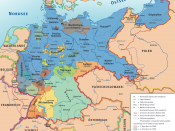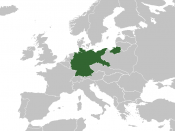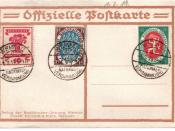During the 1920s the problems in Germany are starting to fade away. The communists were crushed by the right-wing Freikorps units. During about the same time, Friedrich Ebert, the first president, persuaded the workers of Berlin, who were left-wing, to go on strike, which caused the Kapp Putsch to collapse. The inflation got controlled in November 1923, because the German money has been changed from marks to reichmarks. All the marks was recalled and burned. The Foreign Minister Stresemann borrowed money from the Americans to rebuild the German infrastructure. Through the Dawes Plan in 1924, Stresemann had helped Germany to lower their reparation for WWI. In April 1924, Stresemann had persuaded the French to leave the Ruhr. By signing the Locarno Treaty in 1925m Stresemann agreed to the lost of their western borders. A year after that, Germany was allowed to join the League of Nations, which made them a world power again.
Since the problems were solved, people's complaints were dying out. The Weimar Republic had flourished. This was called the "Roaring 20's". People starting to worry less, and have more time on their hands. The people were starting to use their time to develop culture, like how American money was building the countries infrastructure. The most of the people of Germany were happy. The Weimar had flourish in all aspects. They flourished in literature, music, art, film, furniture, and architecture.
During the 1920s, the flourished literature comes in many forms. There was an abundance of German poems, and books. Some famous writers of the 20s were Erich Maria Remarque, Günter Grass, and Peter Handke. There were also a lot of poets at that time too. During that time the books and poets are mostly about how World War I corrupted and almost crushed Germany, but they were able...


